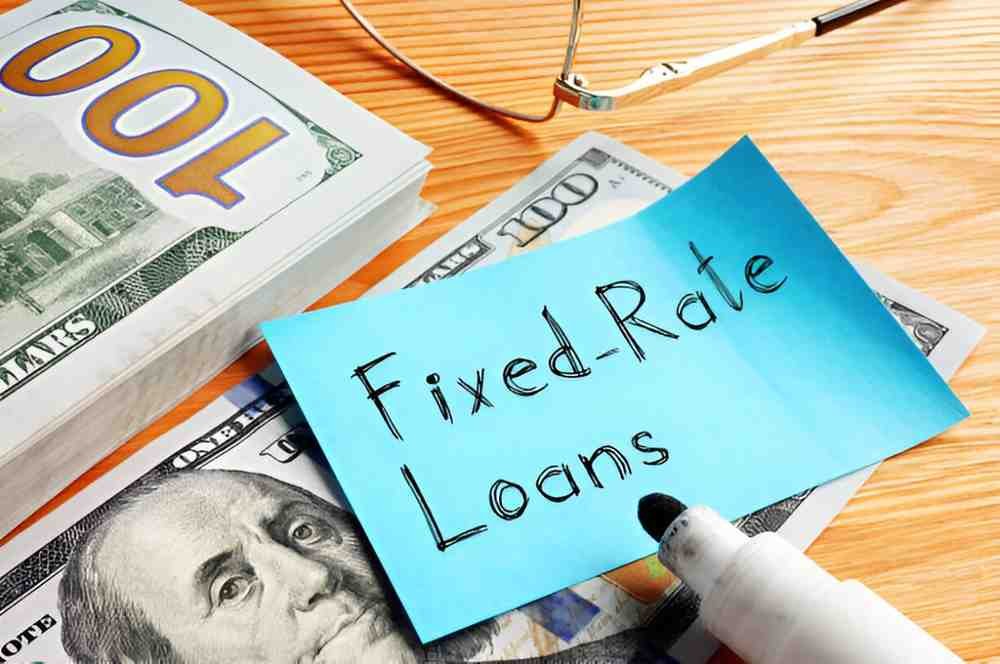A fixed-rate loan is a type of loan where the interest rate remains constant throughout the entire term of the loan. This means borrowers have predictable monthly payments that do not change, providing stability and ease of budgeting over time.
Table of Contents
Key Features of Fixed-Rate Loans
- Stable Interest Rate: The interest rate on a fixed-rate loan remains unchanged for the duration of the loan term.
- Consistent Monthly Payments: Borrowers make the same monthly payments, which include both principal repayment and interest, from the beginning to the end of the loan.
- Long-Term Commitment: Fixed-rate loans are typically offered with terms ranging from a few years to several decades, depending on the type of loan and lender.
How Do Fixed-Rate Loans Work?
Mechanism of Fixed-Rate Loans
- Loan Agreement: The borrower and the lender agree on a fixed interest rate at the outset of the loan, often based on prevailing market rates and the borrower’s creditworthiness.
- Monthly Payments: Borrowers pay a set amount each month, which covers both the principal amount borrowed and the fixed interest portion.
- Interest Rate Protection: Regardless of changes in broader interest rates in the economy, the borrower’s rate remains unchanged, providing stability and predictability in repayment.
Example of Fixed-Rate Loan
Suppose a borrower takes out a 5-year fixed-rate personal loan for $20,000 at an interest rate of 6%. Here’s how it works:
- Loan Amount: $20,000
- Interest Rate: 6% per annum
- Loan Term: 5 years
- Monthly Payment Calculation: Using a loan calculator, the monthly payment would be approximately $386.66.
Benefits for the Borrower:
- Budgeting: Monthly payments are predictable and do not fluctuate, making it easier to budget finances.
- Risk Management: Protection against rising interest rates provides financial stability over the loan term.
Advantages of Fixed-Rate Loans
For Borrowers
- Financial Planning: Predictable payments allow borrowers to plan their finances effectively over the long term.
- Stability: Protection against interest rate increases provides peace of mind and reduces financial stress.
For Lenders
- Lower Default Risk: Fixed-rate loans generally have lower default rates compared to variable-rate loans during periods of rising interest rates.
- Market Stability: They contribute to market stability by providing borrowers with certainty in repayment terms.
Considerations for Fixed-Rate Loans
Prepayment Penalties
- Early Repayment: Some fixed-rate loans may include penalties if the borrower pays off the loan early.
- Refinancing: Borrowers considering refinancing should evaluate potential savings against any prepayment penalties.
Economic Conditions
- Interest Rate Trends: Borrowers should monitor interest rate trends to determine the optimal time to lock in a fixed-rate loan.
- Inflation and Economic Factors: Changes in economic conditions, such as inflation rates, can influence long-term interest rates and loan affordability.
Comparison with Other Loan Types
Fixed-Rate vs. Adjustable-Rate Loans (ARMS)
- Interest Rate Stability: Fixed-rate loans offer stability with constant interest rates, while ARMs have variable rates that can change periodically.
- Risk Profile: ARMs may initially have lower interest rates but pose risks of higher payments if interest rates rise.
Fixed-Rate vs. Variable-Rate Loans
- Interest Rate Changes: Fixed-rate loans maintain the same interest rate throughout the loan term, whereas variable-rate loans are subject to rate adjustments based on market conditions.
- Risk Management: Fixed-rate loans provide protection against interest rate volatility, whereas variable-rate loans may offer lower initial rates but can increase over time.
Conclusion
Fixed-rate loans are a popular choice for borrowers seeking stability and predictability in their loan payments. With a fixed interest rate that remains unchanged throughout the loan term, borrowers benefit from consistent monthly payments, protection against rising interest rates, and long-term financial planning capabilities. Understanding the features, benefits, and considerations of fixed-rate loans is essential for making informed financial decisions. By opting for a fixed-rate loan, borrowers can manage their finances effectively, mitigate risks associated with interest rate fluctuations, and achieve their long-term financial goals with confidence.





